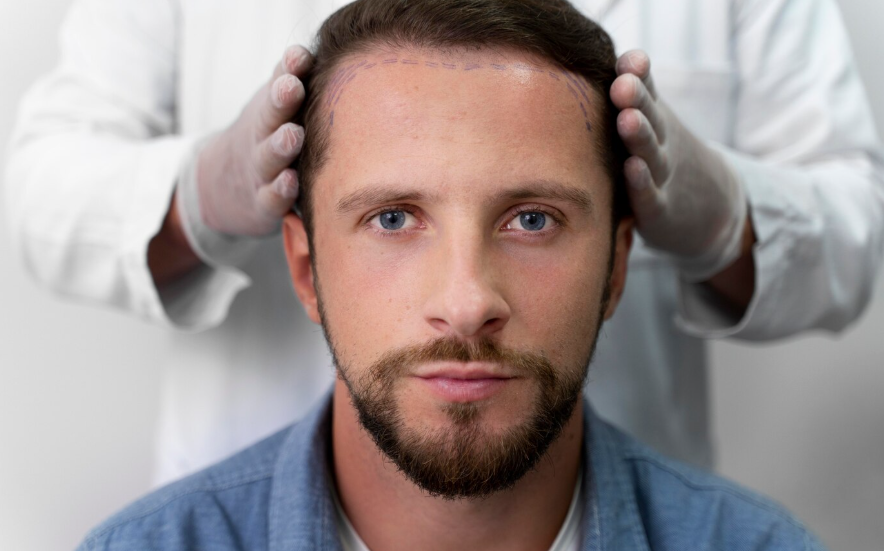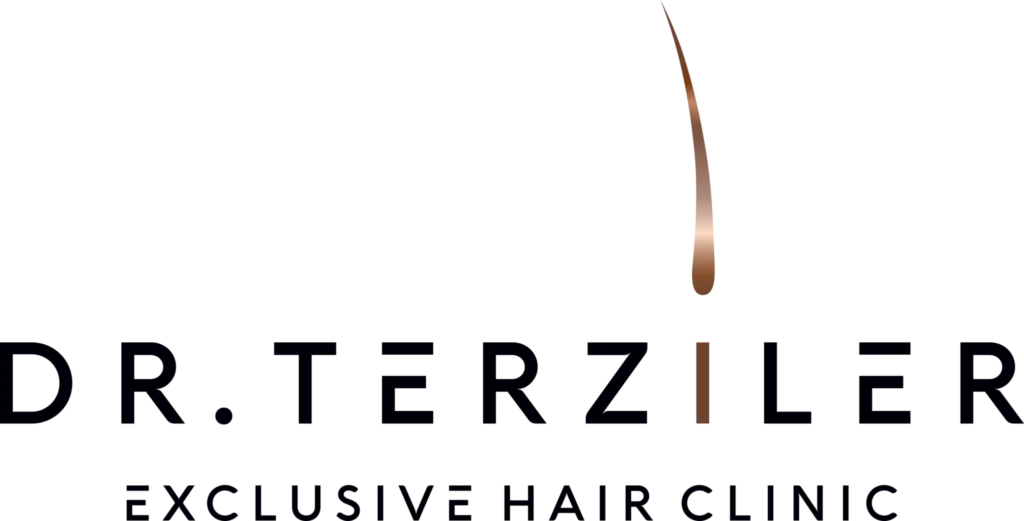Hairline Design in Turkey

Hairline Design in Turkey
Hairline design in Turkey is a crucial step in achieving natural and aesthetically pleasing hair transplant results. Skilled surgeons use advanced techniques to create a hairline that complements the patient’s facial features and age. A well-designed hairline ensures symmetry, proper density, and a natural-looking transition between the transplanted and existing hair. Each design is customized to the individual, considering factors such as hair type, forehead size, and future hair loss patterns.
The process begins with a detailed consultation, where the surgeon analyzes the patient’s facial structure and hair characteristics. Using digital mapping and artistic precision, they outline a hairline that mimics natural growth patterns. A lower or overly sharp hairline can appear unnatural, so surgeons in Turkey focus on creating a soft and gradual transition. The use of advanced tools, such as sapphire blades or DHI implanters, allows for precise implantation, ensuring an even and realistic result.
Why Is Hairline Design Important?
Hairline design is important because it determines the natural appearance and overall success of a hair transplant procedure. A poorly designed hairline can look artificial, unbalanced, or inconsistent with the patient’s facial structure. Skilled surgeons carefully plan the hairline to ensure a seamless transition between transplanted and existing hair. The goal is to create a result that looks natural both at present and as the patient ages over time.
A properly designed hairline takes into account factors such as facial proportions, hair density, and natural growth direction. If the hairline is placed too low, it may look unnatural and difficult to maintain as hair loss progresses. Conversely, a hairline that is too high may not provide the desired aesthetic improvement. Surgeons use advanced techniques, such as sapphire FUE and DHI, to implant hair follicles at precise angles, mimicking natural hair patterns.
Another key aspect of hairline design is the strategic placement of single and multiple hair grafts to achieve a natural density. The front of the hairline typically consists of softer, single-hair grafts, while denser grafts are placed behind for a smooth transition. A well-designed hairline enhances facial symmetry and contributes to a youthful, well-balanced appearance.
The Hairline Design Process at Dr. Terziler Exclusive Clinic
At our clinic, hairline design in Turkey is a collaborative process between the patient and our expert team. Here’s how we approach it:
- Initial Consultation: We discuss your goals, assess your current hair situation, and explain the possibilities.
- Digital Imaging: We use advanced imaging technology to show you potential outcomes and refine the design based on your feedback.
- Custom Planning: Our experts create a personalized hairline design plan, considering all the factors mentioned above.
- Pre-Surgery Review: Before the procedure, we review the plan with you to ensure it aligns with your expectations.
- Precise Implementation: During the surgery, our skilled surgeons meticulously follow the agreed-upon design, using the latest techniques for natural-looking results.
How To Create A Natural And Aesthetic Hairline?
Creating a natural and aesthetic hairline requires a combination of surgical precision, artistic design, and an understanding of facial proportions. A well-designed hairline should blend seamlessly with the patient’s natural hair, following a pattern that complements their facial features. Surgeons carefully assess factors such as forehead shape, hair density, and scalp elasticity to determine the ideal placement. The goal is to achieve a soft, irregular, and gradually fading hairline that mimics natural growth.
One of the key techniques in natural hairline design is irregular micro-zigzag patterns rather than a straight, artificial-looking line. Natural hairlines are not perfectly symmetrical, so creating small variations prevents an unnatural appearance. Surgeons use single-hair grafts in the front row to create a soft transition, while multi-hair grafts are placed further back for added density. This layering effect ensures a fuller look without making the hairline appear harsh or unnatural.
The implantation angle also plays a crucial role in ensuring a realistic outcome. Hair follicles are placed at a natural angle, following the existing direction of growth to create a seamless blend. Advanced techniques such as Sapphire FUE or DHI (Direct Hair Implantation) allow for precise control over implantation depth and orientation.
Personalized Hairline Determination Process
The personalized hairline determination process is essential for achieving natural, aesthetically pleasing, and long-lasting hair transplant results. Since every individual has unique facial proportions, hair density, and growth patterns, a customized approach ensures the most suitable hairline design. The process begins with a detailed consultation, where the surgeon evaluates the patient’s forehead shape, hair loss pattern, and future hair thinning risks. This step is crucial in determining a hairline that looks natural both in the present and as the patient ages.
During the design phase, surgeons use digital imaging and facial symmetry analysis to create a hairline that harmonizes with the patient’s facial structure. A straight or overly defined hairline may look unnatural, so specialists incorporate soft, irregular micro-zigzag patterns to mimic natural growth. The placement of single-hair grafts in the front row ensures a smooth and natural transition, while multi-hair follicular units are positioned behind for density and volume. This strategic graft distribution helps create a well-balanced and realistic outcome.
The Importance Of Hairline Design In Hair Transplant
- Natural Appearance – A well-designed hairline ensures a seamless and realistic look, blending naturally with existing hair.
- Facial Symmetry – The hairline should complement the patient’s facial proportions, enhancing overall balance and aesthetics.
- Age-Appropriate Design – A properly planned hairline accounts for natural aging, preventing an unnaturally low or high placement.
- Future Hair Loss Consideration – Surgeons design the hairline based on potential future hair loss, ensuring long-term suitability.
- Density Distribution – The strategic placement of single and multi-hair grafts creates a soft, gradual transition for a fuller look.
- Natural Growth Pattern – Correct angling and direction of implanted follicles mimic natural hair growth, preventing an artificial appearance.
- Personalized Approach – Each patient’s hair texture, ethnicity, and individual characteristics are considered for a customized hairline design.
- Long-Term Satisfaction – A well-planned hairline maintains a youthful look over time, providing a permanent and aesthetically pleasing result.
How To Determine A Hairline That Is Aesthetically Compatible With Facial Features?
Determining a hairline that is aesthetically compatible with facial features requires careful planning, precise measurements, and an individualized approach. A well-designed hairline enhances facial harmony by following the natural proportions of the forehead, eyebrows, and overall facial structure. The process begins with a detailed analysis of the patient’s face, considering factors such as forehead height, facial symmetry, and natural hair growth patterns. Surgeons use this data to create a personalized design that complements the patient’s unique appearance.
One of the key aspects of hairline determination is ensuring that the placement aligns with the golden ratio of facial proportions. A hairline positioned too low can make the forehead appear unnaturally small, while a high placement may not provide the desired rejuvenating effect. Surgeons also take into account the patient’s age and potential future hair loss, ensuring that the hairline remains natural-looking over time. A properly planned hairline is slightly irregular rather than perfectly straight, mimicking the organic growth pattern of natural hair.
Another important factor is the angling and direction of implanted follicles, which plays a crucial role in achieving a natural transition. Hair follicles must be placed at varying densities, with single-hair grafts in the front for a soft, natural look and multiple-hair grafts behind for added volume. Techniques such as Sapphire FUE and DHI (Direct Hair Implantation) allow for precise follicle placement, ensuring a realistic outcome.
Different Types Of Hairline Designs
- Natural Hairline – Mimics the natural growth pattern with slight irregularities, creating a soft and realistic appearance.
- Straight Hairline – Features a defined and even shape, commonly preferred by individuals seeking a youthful and structured look.
- M-Shaped Hairline – Has slight recession at the temples, resembling a natural male pattern hairline while maintaining density in the center.
- Rounded Hairline – Follows a curved pattern, often chosen for a softer and more balanced facial appearance.
- Widow’s Peak Hairline – Forms a V-shape in the center of the forehead, giving a distinctive and mature look.
- Receding Hairline – Designed for individuals experiencing early-stage hair loss, maintaining a subtle and natural recession.
- Low Hairline – Positioned closer to the forehead, suitable for individuals with naturally lower hairlines or those seeking a youthful effect.
- High Hairline – Placed slightly further back, commonly chosen to maintain facial balance for those with larger foreheads.
- Rounded Temporal Hairline – Provides a smooth transition between the temples and frontal hair, ensuring a well-blended look.
- Customized Hairline – Designed specifically for each individual based on facial symmetry, hair type, and personal aesthetic preferences.
Factors That Influence Hairline Design
Hairline design is influenced by many factors that affect the final result. Surgeons consider facial structure, hair density, and natural growth patterns. Age, gender, and ethnic background are also crucial in determining the optimal design. Personal preferences and lifestyle impact the overall hairline aesthetics. Digital imaging and advanced techniques help create a balanced, natural look. Future hair loss patterns are also evaluated during the planning process to ensure long-lasting results.
Hairline Design For Different Hair Types And Ethnicities
Hairline design for different hair types and ethnicities requires a customized approach to achieve natural and aesthetically pleasing results. Each hair type has unique characteristics, such as texture, density, and growth direction, which influence the ideal hairline shape. Ethnic background also plays a significant role in determining the natural positioning of the hairline. Surgeons carefully analyze these factors to create a design that complements the individual’s facial features and hair growth patterns.
For individuals with straight or fine hair, a more structured hairline with subtle irregularities is often preferred. Since straight hair provides less natural coverage, achieving the right density is crucial to maintaining a full appearance. In contrast, those with curly or coily hair often require a slightly different approach, as their natural volume allows for a softer and more rounded hairline. Proper angling of the transplanted follicles is essential to maintain the natural curl pattern and prevent an artificial look.
What is a hairline transplant?
A hairline transplant is a cosmetic procedure designed to restore or improve the natural hairline. It involves transplanting hair follicles from the donor area (usually the back or sides of the scalp) to the front of the scalp to create a fuller, more defined hairline.
Who is a good candidate for a hairline transplant?
Individuals experiencing hairline recession due to genetic factors, aging, or mild to moderate hair loss are ideal candidates. It’s important to have a healthy donor area and realistic expectations about the results.
How long does it take to see results from a hairline transplant?
Initial results may be visible within 3–4 months as new hair begins to grow. Full results, with complete growth and density, are typically achieved after 12–18 months.
Is a hairline transplant permanent?
Yes, a hairline transplant is considered a permanent solution. The transplanted follicles are resistant to the effects of hormones like DHT and continue to grow in their new location.
What is the recovery time after a hairline transplant?
Most patients can return to work within a week. Full recovery, including the shedding of transplanted hair (a normal process) and regrowth, takes several months.
How natural will my new hairline look after a transplant?
A skilled surgeon can design a natural-looking hairline tailored to your face shape, age, and hair characteristics. Proper placement and density of grafts are crucial for achieving realistic results
Are there any risks or side effects of a hairline transplant?
Common side effects include temporary swelling, redness, or scabbing in the treated area. Rarely, complications like infection or unnatural hair growth patterns may occur if the procedure is not performed by an experienced surgeon.














